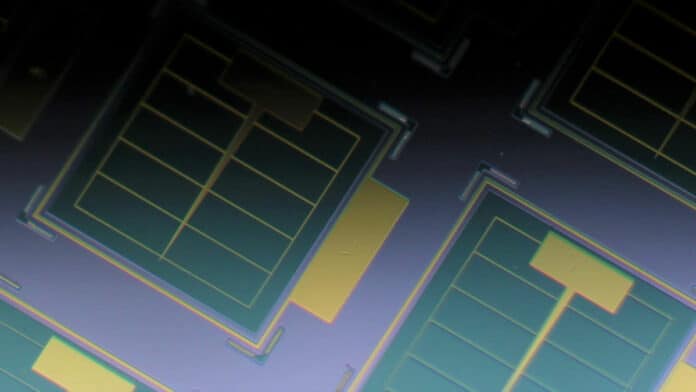The majority of space satellites rely on photovoltaic cells for power. Exposure to certain types of radiation presents in orbit can damage the devices, degrading their performance and limiting their lifetime.
Now, scientists from the University of Cambridge have developed a radiation-tolerant photovoltaic cell design that features an ultrathin layer of light-absorbing material. According to the new study, the device features cells with a surface one-thousandth the thickness of a human hair.
When solar cells absorb light, they transfer its energy to negatively charged electrons in the material. These charge carriers are knocked free and generate a flow of electricity across the photovoltaic. Irradiation in space causes damage and lowers efficiency by displacing atoms in the solar cell material and reducing the lifetime of the charge carriers. Making photovoltaics thinner should increase their longevity because the charge carriers have less far to go during their shortened lifetimes.
Ultrathin solar cells are of significant interest for use in space due to their intrinsic radiation tolerance, which may allow them to be used in particularly harsh radiation environments. In harsh environments, thicker cells would degrade rapidly and enable a reduction in cover glass thickness to reduce launch mass.
The researchers used the semiconductor gallium arsenide to build two types of photovoltaic devices. One was an on-chip design built by layering several substances in a stack, while the other design involved a silver back mirror in enhancing light absorption.
The cells included an ultra-thin layer of light-absorbing gas, which is key to their radiation tolerance. The surface of each cell is only 20 nanometres, about one-thousandth the thickness of a human hair. The design also involved the cells being bordered by gold-colored electrically conducting metal.
To mimic the effects of radiation in space, the devices were bombarded with protons generated at the Dalton Cumbrian Nuclear Facility in the U.K. Using a technique known as cathodoluminescence, the team studied the performance of the photovoltaic devices before and after irradiation. The technique can give a measure of the amount of radiation damage. The second set of tests using a Compact Solar Simulator was carried out to determine how well the devices converted sunlight to power after being bombarded with protons.
“Our ultrathin solar cell outperforms the previously studied, thicker devices for proton radiation above a certain threshold. The ultra-thin geometries offer favorable performance by two orders of magnitude relative to previous observations,” said author Armin Barthel.
The team said that the improved performance of these ultra-thin cells is because the charge carriers live long enough to travel between terminals in the device. The radiation-tolerant cells can also be used in the study of the other planets and moons, such as Europa – a moon of Jupiter – which has one of the most severe radiation environments in the solar system.
Compared to thicker cells, nearly 3.5 times timeless cover glass is needed for the ultrathin solar cells to deliver the same amount of power after 20 years of operation. This will translate to a lighter load and a significant reduction in launch costs.
Journal reference:
- Armin Barthel, Larkin Sayre, Gunnar Kusch, Rachel A. Oliver, and Louise C. Hirst. Radiation effects in ultra-thin GaAs solar cells. Journal of Applied Physics 132, 184501 (2022); DOI: 10.1063/5.0103381
